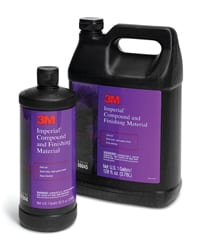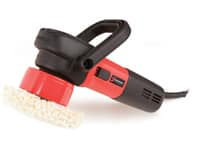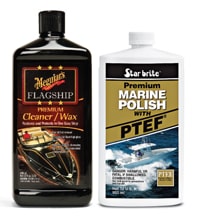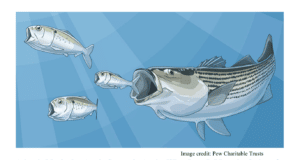Remember how shiny your boat’s gelcoat looked in the showroom? Chances are its luster has faded a bit, but it can be brought back before your next launch.

Rinse/Wash/Rinse
First give the boat a thorough rinsing from the top down. This will remove surface dirt and dust particles that would abrade the finish if you simply hit the surface with a soapy brush. After the initial rinsing, then it’s time to perform a thorough wash with a cleaning product approved for fiberglass gelcoats, such as West Marine’s WM Boat Soap or Star Brite’s Sea Safe Boat Wash. (Many household soaps and general cleaners may contain chemicals or abrasives that are too harsh for gelcoated surfaces.) Finish with another full rinse.

Assess
Now you can assess the true condition of the finish. Gelcoat shines because it’s a smooth surface that reflects light. Even microscopic irregularities can diminish that shine, but those same irregularities may be restored with just a sealing compound, or a very mild polish such as Star Brite’s Premium Marine Polish with PTEF. Pick an area to test. If two or three passes with the polish don’t yield the desired results, move to a mild abrasive polish like Meguiar’s Premium Cleaner/ Wax or Color Restorer. If oxidation is heavier, and cleaner doesn’t do the trick, only then should you consider a cutting compound. Again, start with a less aggressive formula like 3M’s Marine Rubbing Compound, and move to a more aggressive compound such as 3M’s Marine Super Duty Rubbing Compound only as a last resort.
Tip: Single out areas that need additional attention, possibly circling them with a grease pencil. This allows you to use a milder polish on the remainder of the boat then carefully perform more aggressive refinishing on select areas.

Polish
If polishing is all that’s needed, apply liquid polish by hand using polishing cloths (clean bits of cotton cloth with seams removed will also work).
When using a polishing paste, apply it with an orbital buffer, starting at a lower rpm of 1,400 or so to avoid burning the surface. Rather than apply paste to the buffing pad, place small dabs along the surface to be worked. When the paste is gone, stop buffing, as you can actually mar the surface by continuing to buff with a dry pad.
Seal
After finishing with any combination of cleaning polish and rubbing compound to eliminate oxidation, you now need to seal the surface using a polymer polish such as the Star Brite product pictured below. Two coats of polish will provide a season’s worth of protection — though it might be a good idea to do a mid-season touch-up if the boat has prolonged exposure to the elements. If the boat is properly coated in a quality polymer polish, there’s no need to go over the finish with traditional paste waxes. Do a thorough job of cleaning and restoring the finish this year, and come next season, you’ll need only to wipe on a couple of coats of sealing polish, and you’ll be good to go.

Assessing Oxidation
Light – Most of the gelcoat will still be shiny, but with a few dull or cloudy patches. A simple oxidation-removing compound should restore the shine.
Medium – The surface is generally dull and shows signs of pitting. A machine buffer and a polishing compound will remove oxidation and smooth the pits.
Heavy – The entire surface is dull and may be chalky to the touch. Pitting is obvious. Extensive sanding and polishing are required, and full restoration might be a job best left to a professional — or call a painter.









